Leica M6 with Portra 160NC Film scanned on the Epson V500 Scanner – 50 Cron at F2 – NO PP, straight scan. WOW.
Since I am really into film right now I thought I would post a few film pics every Friday from my M6 and various film stock and call it “The Friday Film”! As an intro to this I wanted to go over some feelings about this whole “film thing” and answer some questions I have received recently from readers asking me why on earth I would shoot an M6 over an M9 when I had the choice of either.
Well, first of all…shooting film is a stress free change of pace from digital. It slows you down. At the end of the day you have 24 or 36 frames, and hopefully each and every one of those frames have some kind of meaning behind them. Film is expensive. Scanning is time consuming. When I shoot digital I find I take a lot of bullshit shots just because I can. I end up with hundreds of shots on my memory card and ask myself “why on earth did you take that photograph”?
With film I know that each frame is costing me money so I am much more careful with what I shoot. Still, with my first few rolls I have caught myself shooting something silly as I am so used to digital. Don’t get me wrong though! I love digital but I am also growing really fond of film again. I recently spoke about a “Leica M9 State of Mind” and now I am finding there is a “Film State of Mind” as well.
Film is tangible. It’s real. You have a negative or a slide with your image…your moment in time frozen and etched for all time. Film has a look all its own and while digital can get VERY VERY close to film these days with filters like the awesome “Color Efex Pro” and “Silver Efex Pro” there is still something about film that tugs at my heart. Maybe it’s in my head, maybe it’s because I am getting older and feeling nostalgic or maybe it is because there is something about it that is special.
No doubt, film is slowly dying due to the digital craziness and it seems like every year we lose another great film. I would recommend that those of you who really enjoy photography to get a hold of a film camera and a few rolls of film and take a week or two to ONLY shoot film. It’s a great experience and even the anticipation of getting your images or your scans back is pretty exciting. When shooting film there is less stress. No worries of white balance, what ISO to choose, color, etc. Just choose your “look” with a film you like and shoot.
You can pick up film cameras these days pretty cheap and something like a used Canon AE1 or Olympus OM series camera can be found for as little as $150-$200. For all of the Leica fans, there seems to always be a used M6, M7 or MP around as well as M3’s and M4’s.
Am I saying film is better than digital? Well, in some ways it is but in most ways, no it is not. A camera like the M9 is pretty much, IMO, close to a medium format quality in a small gorgeous package. With digital you have convenience and that is the #1 reason why it has spread like wildfire over the past 10 years. I love the Leica M9 but you guys know that already!
Anyway, this is not a digital vs film post but more of a “celebration of film” post 🙂
I’d like to see more people get out and shoot a few rolls of film. If you do, feel free to share your results with me. I will soon announce a film contest with the main prize being my few day old Epson V500 Scanner (I bought the 700 after lightly using the 500). So get your best film shots ready as the readers of this site will be picking the winner. More details on that soon.
Here are some images, all shot on film with my M6 or a Leica M7 (which can still be bought brand spanking new for those with deep pockets – $4595)
BTW, these were all scanned on the Epson V500!
Kodak EKTAR 100 film – M6 – 50 Cron
Ilford B&W XP2 400 film – M6 and 50 Cron
Ilford XP2 – M6 – 50 Cron
XP2 on the M7 – 35 Lux
M6 – 50 Summitar – Ektar 100
Ektar 100 on the M6 – 50 Summitar
M6 – 24 Elmar – Ektar 100
M6 – Ektar 100 – 50 Cron
[ad#Adsense Blog Sq Embed Image]

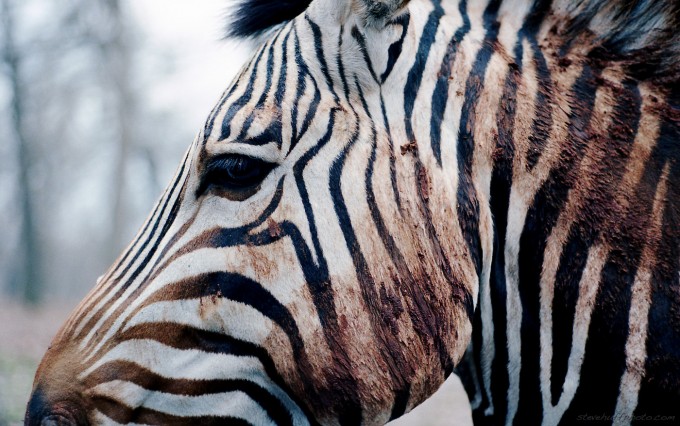
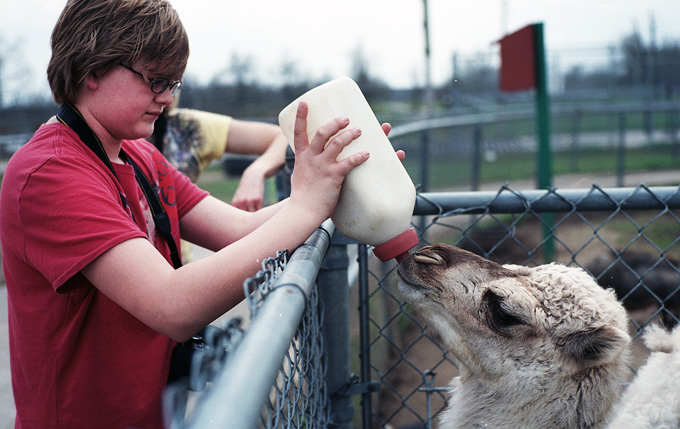
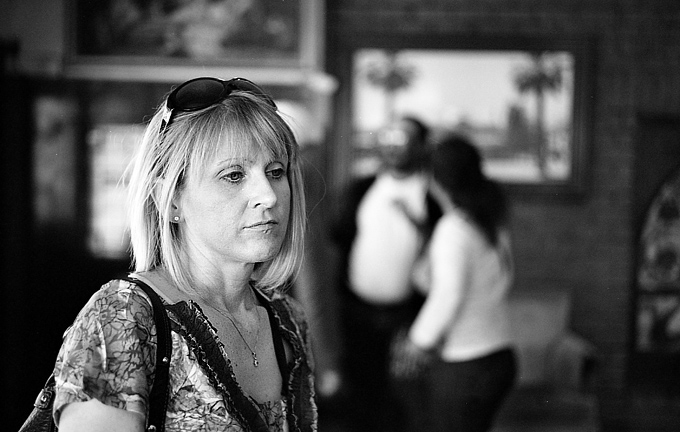
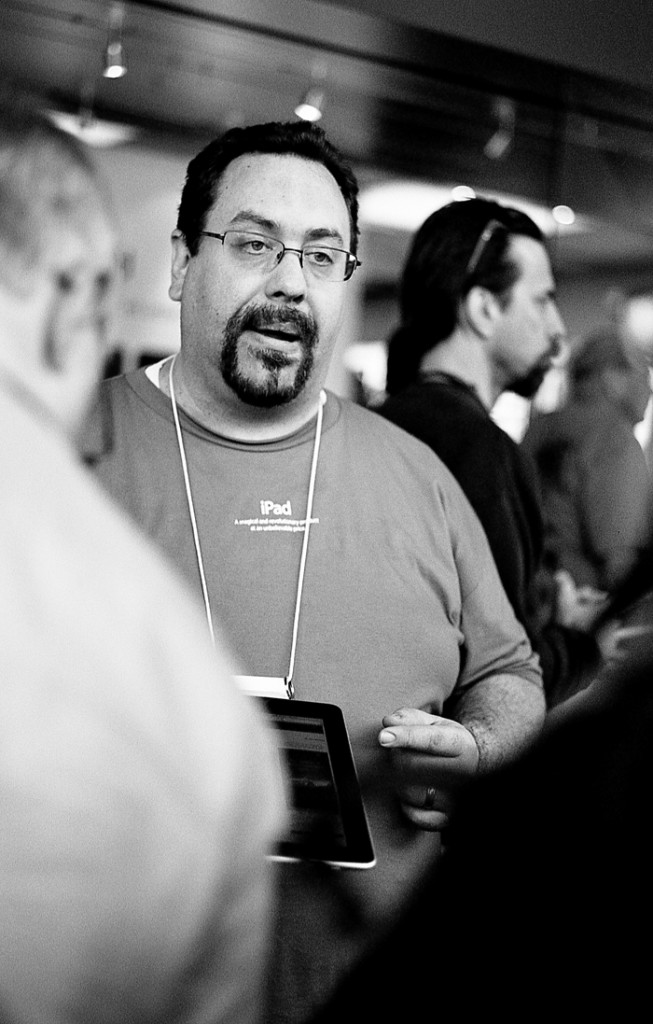
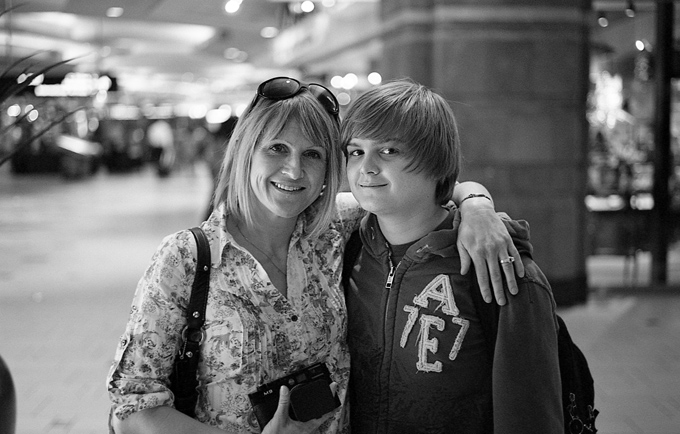
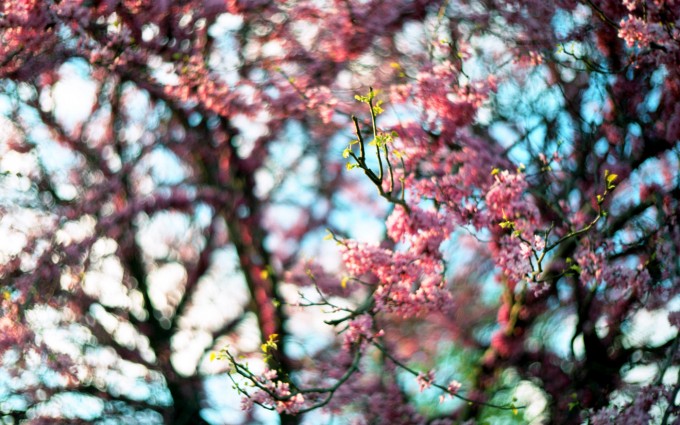
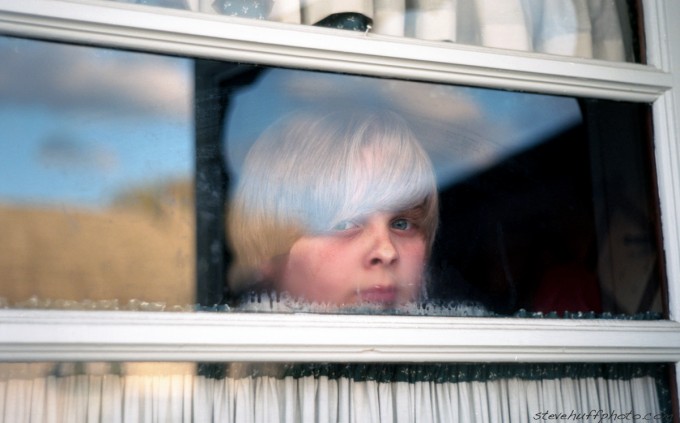
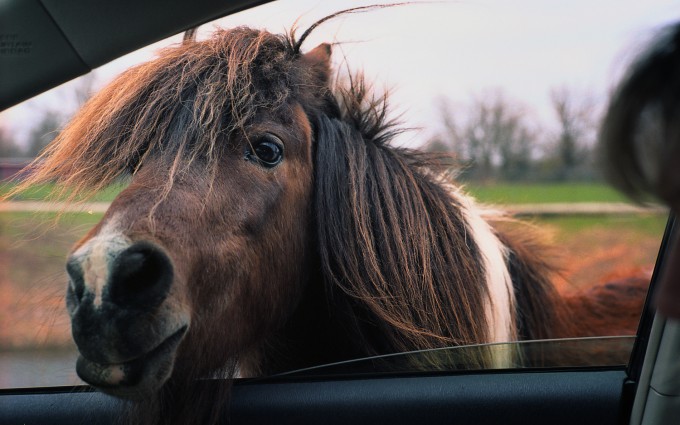




Hi Steve –
I’m glad I found your blog.
Great quotes about film vs. digital. I have said, literally, the exact same things to my friends and associates.
I do not think film is shrinking…Fuji and Kodak have consolidated some of their lines, but in the case of Kodak, I believe a part of a long term strategy of film growth, not decline.
Kodak released the new Ektar 100 a few years ago. How cool was that. But, they also released it in 120 and LF 4×5 & 8×10. They must know something. This year they consolidated the Portra emulsions producing 2 excellent films, Portra 160 and 400. The VC emulsions were just unnecessary in this day and age where one click of the button can boost color saturation if it is desired by the photographer. These new formulations include the Vision 3 technology from their cine division…Portra 400 can now be used at 1600 without any pushing from a lab and retain color, contrast, and grain as if it were shot at it’s true box speed of 400. 1600 ISO and 2.8 can get me great images in low lit environs…if I need to go to a 15th or an 8th, I can work easily with a light-weight mono-pod…the images, like you have said, will be soulful and something digital can’t touch. To each their own.
Likewise, shoot some Fuji 400 Pro H at a stop over and you can get a “workflow” hard to duplicate in Photoshop..and if so, would add more time to the digital workflow already. To see awesome work done with Fuji 400 Pro H, the readers should check out Jose Villa or Elizabeth Messina.
Film sharpness vs, digital sharpness…? I debate you here. Film is always sharp (thanks Kenny Rockwell). What we might be seeing in digital is lack of “noise”…but I looked at some snaps I took with a Canon 85 1.8, Rebel 2000 film holder, and Kodak BW400CN. Not only were these images as sharp as a tack, they have the natural 3D feel of film…my eye’s strained to see any grain, though a little is always welcomed. Another thing, film can be sharp AND soft in the same frame. There are numerous examples at Jose’s site or just peruse Flickr, search “C330”, and start looking at some of the images shot with Ektar or Fuji 400 Pro H.
With the commercial and artistic success of Jose Villa, Elizabeth Messina, and Jonathan Canlas, film education is starting to take hold in the 20 something generation. The myth that “digital” is “free” has seen the light of day after people realize just how much time they must work flow their pics to get them to look good. Free “film” – you just pay for it with your time. Me, I’d rather just go out and shoot.
On a last note, Jonathan Canlas is selling an excellent guide in how to shoot film for the pro and amateur. Google his name and “FIND” and you should find it.
I love using film also !! it’s also very cheap and easy to develope your own blacn and white films at home ! after that you sacn them and if you like some of them you can print them the old way ! i’m working with a Nikon Fe2 this days but i will jump to a 6×6 Mamiya or Hasselblad !
i’m having a lot of fun !
Greg
Noel,
Those are all very valid points and many of them are the reasons why we seem to gravitate back to film these days. The realization of a simple fact: a camera and lens built 50 years ago can supply us with the most beautiful images today. I know I sound like a broken record but again, the reasons behind what many go through today in digi-world has nothing to do with progress or technological advances because, in the end, you can’t re-invent the wheel. It’s all about business and economics. Camera manufacturers understand very well that photography is a DEAD END business and the only way to survive and grow is to pump out new products for us suckers to spend money on, continuously. It is US who allow it. I have stopped supporting Nikon two years ago, I went back to 50 year old equipment, while again having TONS of fun and my pictures show it.
If one stops to think about it, if you really love Leica, all you need is an old M3, a 50mm Summitar, a 35mm Summicron (the one with the goggles), a 90mm elmarit and 135 Tele Elmar. With a little luck, that’s an expense of $2500 total and will last a lifetime or 2..3. Never need to buy anything else, ever. Obviously, we all love our toys, so we may get sucked into a few more lenses or another body and that’s okay.
I frankly don’t know where Leica is going, as they have painted themselves in a tight little corner, with little room to move. The M9 cannot evolve much until it is something other than an M (again, you can’t re-invent the wheel there), and the S2 gets them into the same rat race as everyone else, and they will never catch their own tail. That’s total failure right there. In the meantime, there is huge demand for some of their new lenses and still can’t buy them. They may need to prioritize a bit and pay attention to where their market is and who they really are.
In the medium format dept, there is a reason why you can’t find Contax 645 bodies so easily. That’s a GREAT film camera and you can slap a $20K Phase One back if you want tot get Digi-silly. Food for thought…
To me, shooting film is way cheaper, as TIME is the most precious thing I have (or lack of actually). The time that it takes me to develop and scan a roll of 36 B&W is nothing when compared to the time it takes to go through 200 digi-shots, of mostly crap that I shot just because I could. With color, I need to spend hours in front of a screen to give me what a slide of Velvia would have given me (and still wouldn’t even be close). When considering that my lab will scan that slide at an equal to 25MP, there is ZERO advantage to using digital. Obviously we all have different requirements, and wedding shooters for example will always love digital. Also, those who feverishly hide behind Photoshop to turn mundane into gold by heavily manipulating files, will obviously never abandon digital, as they’d be lost without it.
The S2…that thing was obsolete before it came out. I really don’t know what Leica is thinking there. How many do you think they sold?
The nice thing of the M9 is that those users that like or even need the digital workflow have an option in the M system. We always have a tendency to tell people what is the better solution. I think everybody has his or her preferences, workflow, style, etc and the good thing is that the M system is not just offering one solution. Is it worth spending 7k on a camera that will be worth 4k in 2 years from now. For some it is. Some might start calculating how much they save by not buying film etc and vice versa. Personally I love the rangefinder, I like film, I use a digital camera. My personal reason is that I have thousands of negatives in boxes right behind me that are waiting to be scanned. At some point I couldn’t keep up scanning (I have a Nikon 9000 and find it very slow). My concern is that most of these images will never see the light of the day. I could get them scanned(pricy) and I could have gotten them scanned when I dropped them off at the lab. (Actually I did with some and never liked the outcome). To me a digital M brought back the fun because it fits my workflow and my professional need for quick results available for print. Is it worth 7k? To me it is, to others it might not and I will never tell them what way is the right way because the only right way is the one that works for that person. Is the price too high for a M9? I wish it would be less but apparently people are buying it so I assume it matches its value.
Film is Expensive? Well it is and it isn’t. I love film and I love digital. I use both for different reasons. I use digital for sport because of the crop factor with lenses and with panning fast moving race cars, I will get as many wrong as I will get right.
I use digital where the quality of light is variable especially if there are flourescent lights. Tungsten lights not so bad because you can get 64T tungsten balanced film from fuji that you can push to ISO 200 without loss of quality.
I use film when I want the image to count. I want it the best it could be and most important of all, immune to hard drive failures. Holidays, speical events, shows, school plays (Fuji 64T is really good here). The other thing digital can’t do, landscapes on a 6X17 camera or on an Xpan. Stiching is good but unlike a 6X17 it just doesn’t give you the “normal” perspective of a panoramic camera.
That brings me to my original question, is film really more expensive than digital? If you have to include the cost of the computer, back up hard drives and the time you spend looking through 1000 shots to find 30 good ones or 36 shots to see 25 good ones, I am not so sure.
Add the camera’s depreciation to the equation and I am not so convinced it’s actually cheaper to shoot digital in many cases. If I spend $2K on a second hand Leica M7, I will get that or nearly that much when I sell it 12-24 months from now. If I spend $2K on a Hasselblad 503 with 80mm lens, second hand it’s still worth that much or close to it 2 years from now. But If I spend $10K on a M9, when Leica fix up its supply problems or when a M10 or R10 comes out, it will be worth half that or less. Same with Nikon D3. Digital cameras are computers. They become obsolete like computers and depreciate like them. They do not have the longevity of a film camera. I can still use a Leica IIIf from 1953 and get the same image quality from it as an M7. I wonder if in 2050 the M9 will still work? Will the computer in 2050 be able to read a jpeg of RAW file from a M9. Will the card reader be able to read the SD card?
It’s a computer. It will suffer the same demise as this year’s laptop. Great for a few years and then out of date. I do wish Leica would think of that when they price their S2 or a future R10 if it ever comes out.
I’m impressed by the pictures. But to be honest i will not go back to film. At the end, to show the pictures you will end up by digital scanning the slide ans produce alao a digital copy of your analog film. I do have to spend a lot of time to get good results out of the scanning process. Therefore i prefere to shoot digital and if i want a analog look of my pictures i’m using a Photoshop filter. This workaround is saving me a lot of time!
Hi Steve,
great pics congrat’!!
>>I’m very interested in how you produced your nice scans (resolution, contrast etc.) and how you did the post processing, especially converting the color negatives into positives, because I was never able to get such pleasing scanning results out of my film negatives.<<
I just have the same question as Martin. I am scanning my Leica R3 films with the Epson V600, but my results a much more grained and you could think its a pic from the 60ies..
Please help me..thank you so much
regards
yvonne
[img]Q:\IOMEGA (Q) II\RAW2010\Leica\analogLeicaR3\März2010\web[/img]
or this one
[img]Q:\IOMEGA (Q) II\RAW2010\Leica\analogLeicaR3\März2010\web[/img]
Steve, I am probably being really thick here but I really can’t add images. I click on ‘add images’, it asks me for the address and I paste it and then it does what it did above. Any ideas? Thanks!
Stephen B
Here is the link (check out the rest of the set too)
http://www.flickr.com/photos/37556068@N06/4505670849/sizes/l/in/set-72157623692794161/
Just got some of my slide film (velvia) back from my recent trip to Cyprus. Spent a good part of last night scanning. Velvia still has it that is for sure.[img]http://www.flickr.com/photos/37556068@N06/4505670849/sizes/l/in/set-72157623692794161/[/img]
Francis,
That’s funny..I was thinking the same today. Labs like NCPS in CA, are probably laughing all the way to the bank these days. There is much reduced competition in that dept and there is possibly room now for entrepreneurs looking to specialize in film and offer the more casual shooter real quality processing. I think that for a certain category of professionals, digital will always be the way to go for convenience, speed, workflow control, etc. But, for semi-pro and amateurs, film is really having a resurgence (without mentioning that many pros still shoot film for their really serious work). Digital is has become a rat race and I can sense that people are getting somewhat tired of it. The continuous refresh with promises of a “supposedly” better product has gotten tough to follow and cameras are just getting way too complicated to really enjoy them. It takes a year to master one and then a new one comes out. Also, reviews of new products require a huge amount of work and are reduced to meaningless and irrelevant in record time. Meanwhile people are still happy about reading a review for a Nikon FM3A and 40 year old lenses. The way I see it is very simple and it applies to not only photography..You can’t reinvent the wheel!
As far as Leica, if they decide to abandon film, it could be a huge mistake, as they have pretty much painted themselves into a corner with the M9. That is a product that will have a very hard time evolving in digi-world. Aside from the sensor, there is not much you can change or improve about an M camera until it is not an M anymore. After all, their best camera to this day is still the M3, which pretty much tells the whole story. They may feel tempted to enter the lower end DSLR market but there they will be crushed by Nikon and Canon. Film, on the other hand, still has plenty of business potential if marketed correctly and not just as a nostalgia product. Just my 2c..
Hi Steve…
Film slowly dying, I think that soon whoever will be good at making prints and will open a lab will be making a bundle (especially if the films are being developped ans scanned at the same time). I just went to verify your affirmation that film is slowly dying. I went straght to the 2010 Eastman Kodak annual report..For 2007-2008-2009 the digital business unit had loss-earnings of -17M$, -177M$ and +35M$… That division still has a while to go before they make money. Film: 2007-2008-2009: +281M$, +196M$ and +159M$….Still making some cash. Film basically keeps that company afloat, not bad for a dying product. Kodak is still banking on it and is not about to let it go. If I remember well R&D in film is one fifth of of the R&D in digital. And guess what digital R&D has been going down in 3 years but will have to keep to a substential level. The CCD you find in the M9 is obsolete since Canon is supposed to announce the retroilluminated CCDs this summer, Canikon have much lower noise levels, so Kodak needs to work to provide their client with good sensors. So profiits in the digital world are slim if there is any. Film is mostly profit… development, scaling up, production, distribution, sales… all well optimized since 1880. Just food for toughts.
Hey Steve,
Very nice pictures and the Epson V500 looks like a good scanner. Enjoy the V700.
I agree with what you say about film. That is why I got back into it in 2007.
But now, I am back to shooting strictly digital. I even sold my M3.
I love shooting film, but it’s expensive and not convenient.
I agree that with digital we all tend to take unnecessary BS photos.
But with my M8, I have thought about using a small 256mb SD card (fits about 25 high res DNG shots) and avoiding chimping and deleting photos. This would force me to have a film frame of mind, if that’s what I desire on a particular day.
Frank
Next step will be a developing tank and some Tri-X and TMax100! It’s very easy, and with a changing bag and a scanner you don’t need to set up a dark room. As well as an M9, I use an M7 and the “Texas Leica” – a Bronica RF645 rangefinder. I did buy an Epson 4870 to scan the 120 negs, but found it disappointing. I have two 35mm film scanners, a Minolta 5400 (which is slow to scan) and a cheapo Pacific Image U1800, which is what I generally use, as it is fast, easy, and provides enough quality for my Tri-X. Make sure to try out VueScan – the best scanning software for home use. I found the Minolta app rather buggy and it soon quit working with newer system software for my Macs. When you’ve grown up with film cameras, it’s hard to shed the feeling that only with film have really taken a photograph. Stupid, but hard to shake. After all, digital is so much more convenient, and in the M9 it is easily the equal or superior of film technically speaking. All the same, sometimes I need to ‘make a photograph’ rather than ‘take a picture’!
So after reading your latest posts on film I finally got myself to scanning some of the pictures I took on my first roll of FujiFilm Superia X-TRA 400 with my recently acquired Yashica Electro 35 GT rangefinder. Here’s one of my favourites, taken inside a McDonald’s restaurant in Cologne, Germany.[img]http://www.efixmedia.de/picblog/images/35_GT_XTRA_400_1002-02_lr-700.jpg[/img]
speaking of the iPad, lol, you should get one to show off your photography!
Steve,
It’s just wonderful to see you, and so many others, being so inspired by film again!
Last fall I bought a Bessa R2A from a friend, literally a few hours before I left for my trip to NY. So my first stop was B&H to buy a lens and B&W film! It’s all I’ve been shooting since. My DSLR has seen no use and even my Hasselblad has been hardly used.
The Voigtlander served me fine, but I have always lusted after a Leica and so recently I finally ordered one; a Leica M6 Classic – coincidentally on the same day you acquired yours!
And then, after reading your review and seeing the wonderful pictures of the Summitar, I ordered one this morning (mine is a 1948 version!). Everything will arrive next week, so naturally I cannot wait to load up my camera and go out shooting!
@ Stephen B: I concur with Dirk, shoot RAW, and do it the old-school way, as if you were shooting film. AWB is easily corrected in PP.
@ Dirk: you have a wonderful eye for street photography my friend, especially for the funny moments!
And Steve, I cannot wait for your scanner reviews, as that is the next purchase on the list. Somehow this is all getting expensive! Have a great weekend.
Frank
[img]file:///Users/timjones/Desktop/Tim-Jones-2.jpg[/img]
Film Rocks !
Hey Steve, one thing about the cropped pictures in the comments. Just add
.comment-body p img {
width: 100%;
}
to your style.css
That should do it.
Now that you’ve made it this far, how long will it be before you’re developing your own B&W film? 😀
I’m curious, how did you scan the Ilford XP2? Did you scan it in as B&W or convert it once you had scanned it? When I’ve shot it, I’ve taken it to Costco and had them scan it, even when I tell them it is C-41 B&W it always seems to have at least a slight colour cast. Of course if you don’t, or they aren’t paying attention it is likely to have a severe colour cast.
Also have to tried getting prints, scanning those, and comparing them to your scanned negatives?
Stephen B
Forgot the link. 😉
http://www.flickr.com/photos/dirkahlgrim/sets/72157622684791241/show/with/3886290094/
Stephen B
Here is a link to my flickr account. These images I took with various cameras; Leica M8.2, Leica M6 (drugstore budget scans), D700, Canon 5D, and 5d2. So it is a mix of film and digital. The M9 arrived a week ago and I will upload images soon.
Dirk
Love the images!!!!! My favorite thing about film is how great the detail in the shadow areas look as compared to digital.
Wow, it’s always great to log on to see so many comments and so many readers having fun with photography. Pretty sweet! I want to thank all of you for the kind words and enthusiasm on my film post. I am having a BLAST with it.
I plan on reviewing the V500 and V700 ASAP as well as put up a video showing how I have been scanning these negatives. The V700 was supposed to arrive today with some film and my new bag but UPS lost the package! Arg. Im sure it will arrive Monday.
Anyway, check back every Friday for more film stuff! Thanks guys!
Steve
Steve,
Film is so much fun! I like the look of the Summitar images. I liked you shots with the Summitar that I bought the lens for us on my M6. If you are out exploring films then might you must try some Efke 50 (shoot at 100 and develop as 50), Rollei Pan 25 or Superpan 200 and Adox CHS Art 100. I have run all through my M6 and also through my Pentax 645n. Keep up the film work! It is fantastic! Your site is a daily part of my day so keep it up!
My advice to anyone considering an M9:
Shoot film on an M6 for a year. You will learn a lot more about photography that way, and in a year’s time, the prices for M9’s will come down far more than whatever you spent on film and processing.
A very apropos article from The Online Photographer: “The Leica as Teacher”:
http://theonlinephotographer.typepad.com/the_online_photographer/2009/05/a-leica-year.html
Dirk, that is good to know about the WB not being set in stone. Digital is really a lot of fun and do enjoy it too. I like you hybrid approach and it is certainly something I will consider.
Do you have a flickr account or similar that i can check out? Would like to see some of those M9 shots.
Steve
Thanks for adding this section. It will be a great addition and will show your fans that film and a scanner may not be much of a disadvantage in comparison to having the latest digital.
Also, for those of us that may follow Steve’s suggestion to shoot only film for a couple of weeks. Try adding this to the mix. Select one lens, or one focal length, and shoot only that lens for a whole day or more. This will help you to learn the look of each lens you do this with.
Paul
I thought about buying a film Leica but decided against it. Spent too many hours in darkrooms sniffing chemicals to ever want to go back.
Don’t see much sense in just doing the scanning part either. Way too picky to rely on others.
Steve, your photos ALWAYS inspire me! Beautiful images! The way that summitar renders….just unbelievable! Guess I’ll get back to stalking ebay for a Leica 🙂
Hi Stephen B
Somehow I don’t worry much about the white balance. I shoot in RAW and white balance can be easily corrected in Lightroom. Your WB camera setting doesn’t get baked into the image when you shoot RAW. Sometimes in critical lighting situations I look at the screen. I take one shot just to check exposure. From there I go without screen. You start using your photographic part of the brain again by imagining what you took and get rewarded when you see it on the computer. It worked with film cameras and we got more “keepers’ per ‘roll’. I believe that with digital we shoot first, then we look at the screen, and then we adjust. With Film you look first carefully and then you shoot and because it is expensive per shot we think more about when to press the shutter. You build that image in your head.
Dirk
Steve,
Nice job on your Friday Film post. What, no Fuji Velvia yet ? For all your readers who might be looking for a great Lab to do there Fuji Velvia and other film processing along with enhanced Hi Rez scans let me suggest North Coast Photo and Imaging. They do it all, both B&W, Color and Color negative. The owner is one of the offical NHRA photographers ( Drag Racing ) who has had his work published world wide and has built a reputation for his excellence in the film processing world, your contact there would be Bonnie and there phone number is 760-931-6809. There are also many others to choose from but these guys are simply great.
Keep up the good work Steve, it’s so nice and refreshing to see articles like yours, go beyond todays norm.
Gary
@Dirk, that is a good idea to switch off the LCD however there are some issues you might find (if you are trying to shoot out of camera images) such as problems with the white balance. One of the good things about the LCD is it tells you instantly if the settings are off and it is capturing poor images as a result. I would be worried that I went all day shooting and came back with strange white balance ruining my photos. That is where film trumps digital. There are no settings, it just is what it is. Sensors are tempermental and freak out sometimes with trickly light situations, with film you have the luxury of shooting all day and not worrying about that effecting it.
The one thing I wish I could do with film that I can’t is shoot say 3 images and then go home and see them. I have to wait for the whole roll to be finished and then I get 36 shots to look at all at one go. That is great but almost too much on the day. I would not mind if I could see my shots a few at a time every few days rather than all at once. With digital you have this and that is what is really fun about it.
People complain when you spend the afternoon or evening going through your digital shots, playing with them, zooming in and out but the reason we do this is because, quite frankly, it is fun. I like doing it, I like shooting a few digital shots, going for coffee and going through them. It’s a nice thing to do. What I am planning to do when I pick up 2 rolls of slide film tonight is only scan 10 per day so I can spread out the enjoyment. I suspect is will be a Pringles situation though that once you pop, you can’t stop!
I will try!
Hey Steve – Really love this new section and can’t wait for future entries. I’ve enjoyed your posts on the M6 so much that I went out and bought an M4-P to try out with a roll of Porta 400 VC. I’ll keep you posted on how it turns out.
Since my new acquisition, I’ve been scouring flickr to see what film people use with their Leicas. With that said, I look forward to seeing what you pop into your M6. Given some of your warehouse pics, I think some experimentation pics with expired film might be a cool post in the future.
Steve, it is because of being nostalgic and because of your age! It’s a mid-life crisis! I know, I’m going through it too. We long for the nostalgic. Film is tangible. Film has that glowy, 3-D effect. It brings back wonderful memories. The day before you bought your M6, I almost bought one online from a private seller. I chickened out. Well, I’ve been looking since and when the right camera comes along, I’m grabbing it. I want to shoot film again. I still have my Olympus Stylus, my Holgas, an old Nikon, and a Polaroid back on my Holga to use outdated 669 color film I got for free. The results are so 1960’s looking. I also have a brick of old 2005 Kodak Gold 200 speed film I received from my a friend who was going to chuck it. (For old film like that, I’d send i to Snapfish or some place cheap. Who knows what I’ll get from it. LOL!)
Anyway, I long for the old days when there was no digital, but also embrace digital because it’s quick and less waste. The one thing that bothered me about film is the waste of paper. That’s why I like the idea of scanning the negatives. Saves on trees.
Your pictures are beautiful, as always.
Thanks Steve. I’m looking forward to your review of your new scanner (V700?)
I’ve long admired the qualities of a well printed B&W Leica film image. When I was a custom b&w printer I always felt that there was something extra that I could pull out of the negative.
Oops! Image I just shared is cropped. Actual shot is found here: davidchuaphotography.blogspot.com
Steve, your Summitar has a wonderful unique bokeh! It looks a little swirly. It’s a great bargain!
Film is Beautiful! And I think film is very much back alive! Photography is not just about images. It’s about the entire process of making an image! Here, I share a scanned color neg shot with China Lucky ASA200 Color Film using a ONE-ELEMENT Carl Zeiss Tessar 50mm F2.8 lens on a old Zeiss Ikon Contaflex:
[img]http://3.bp.blogspot.com/_K834RXGYQy8/S77zffc9iCI/AAAAAAAAAjM/oM7GGnxDwUQ/s1600/19.jpg[/img]
Great stuff Steve, me wants more film stuff!
Maybe even a look at the M7 or MP?
One thing that I do with my M9 is I switch off the LCD screen. This way I don’t shoot and look and shoot and look. It forces me to SEE through the viewfinder and to visualize that image. It is nice to see the images pop up on your computer at the end of the day. Almost like when you look at the freshly developed roll of film and you realize that you got the shot or not. In addition I try to wait with shots for the right moment and to shoot just one frame. It is a habit that I got from shooting film. Often I have one shot even in digital, maybe two and in most cases the first one is the winner. Switching off the screen and taking less shots with a digital camera helps me to visualize what I am doing and to trust my instinct. Plus you end up with less multiple shots that are populating your hard drive.
[http://www.flickr.com/photos/37556068@N06/4501120040/sizes/l/]
Superia 400, Leica M7 and Summilux 50.
The other thing about film that is often missed is that even though it is ‘expensive’ in that you see the money go out on each roll you buy, it is small amounts compared to the big amounts you lose when you go down the digital road because whatever one likes to believe, one wants to have the best in whatever you are doing and when I was into digital, I kept upgrading whenever the newer, better camera came along. With film, I don’t do that. I have a classic Leica M7 with summilux glass and don’t feel the need to upgrade so even though I spend money on film and developing (slide and C-41) I don’t get hit with the big credit card amounts that I used to when chasing the mega pixel/high iso digital dream.
Film…it is cheaper in the long run.
Steve, that picture of the blooming tree is just wonderful! The Summitar renders absolutely magical – I had to save the picture and set it as my desktop background 🙂
I am off to Rome for a week and will take some film for my M6.
I agree about buying an old film camera very reasonably – you might as well buy a classic – such as a Leica or a Nikon F2 – they feel wonderful to use and give great pride of ownership. I also use a Pen EE and a Rollei 35SE which is a wonderful thing and always draws enquiries from bystanders!
Hi Steve,
I’m a new fan of your blog from Shanghai, China. I was searching information of M9 and found your blog. I really like your blog as everything is so “real world” and the gears you reviewed are what the amateur photographers like me are interested in.
I’m now struggling buying an M9. I’ve been shooting films with my MP and Sumi 35a/50a, as well as a Rolleiflex 2.8GX (which is a really fantastic camera with super Zeiss lense). I scanned my films with Nikon VED for 135 and Epson V750pro for 120, both are great scanners. I also have an Epson R-D1s, which is only 6 MP but I like its color well. Now I’m struggling to upgrade it to an M9.
Looking at your M6 pictures, I’m again convinced that film is a totally different thing from digital, in terms of color, 3d, grain, and the unique subtle way of shooting with a Leica film camera. To echo bruce’s comments, that when shooting a digi, you can just press the shutter and exam the result and re-press, and review, …. so you cannot do a photo in a way you shoot film. I really share the same comments with bruce that I would remember at least 30 out 36 easily in a roll but much less in a digi card.
M9 is a great camera, it’s much more convenient than film and a great shooting tool, yet very expensive. I’m now thinking of ordering one from B&H as they do international shipping. Only concern is that I will wait for a loooong time and the custom will charge me a big tax. Anyway, I’m struggling, especially knowing that M9 would not offer a better/much better image than my MP/film.
I’m reading your blog every day and like your reviews and pictures very much. Keep going with more interesting reviews and posting more good photos.
2 pictures taken with 50A sumi and Neopan 100
[img]http://farm5.static.flickr.com/4008/4493038036_3eaaea81aa.jpg[/img]
[img]http://farm3.static.flickr.com/2505/4493035884_95dfef27c3.jpg[/img]
Hi Steve,
I very much appreciate your “new” film trip. Your zebra looks simply gorgeous. I share your standpoint that convenience was the main reason behind the digital success story.
I’m very interested in how you produced your nice scans (resolution, contrast etc.) and how you did the post processing, especially converting the color negatives into positives, because I was never able to get such pleasing scanning results out of my film negatives.
Kind regards,
Martin.
i’ve been shooting a lot of film lately, more than i have been shooting digital. like you, i got an m6 classic and an epson v500. i went on a shoot with a friend of mine to some warehouses that are being demolished. i shot 2 rolls of neopan 400, and my friend shot her d3. i remember when i was choosing which negs to scan, that i scanned about 30 out of the 76 negs or so. (i usually sneak a couple of extra exposures per roll). but i was surprised that i had so many i was scanning because when i shot dslr, i remember keeping 1 in 10 or less because i would go shutter happy and shoot anything. but i realised it’s because i was thinking so much and taking my time to compose properly that my strike rate when way up.
keep up the updates with your m6. very interesting to me. i’m surprised with your comparison between the m6 and m9 that the film pics looked SO MUCH more 3d and glowy. the m9 was indeed flat as you said.
Hey Steve!
I really have to agree with you there. Film is real and tangible, not just a bunch of data interpreted by a computer. It has a romantic quality to it, be it the look, the development or the copying.
I have been interested in the epson v scanners for some time now and I’d like to ask/suggest a test for you: how about printing those scanned images?
My main concern about flatbed scanners is how they would hold up on a 30x45cm print (sorry, I use metric)
Thanks and good shooting!